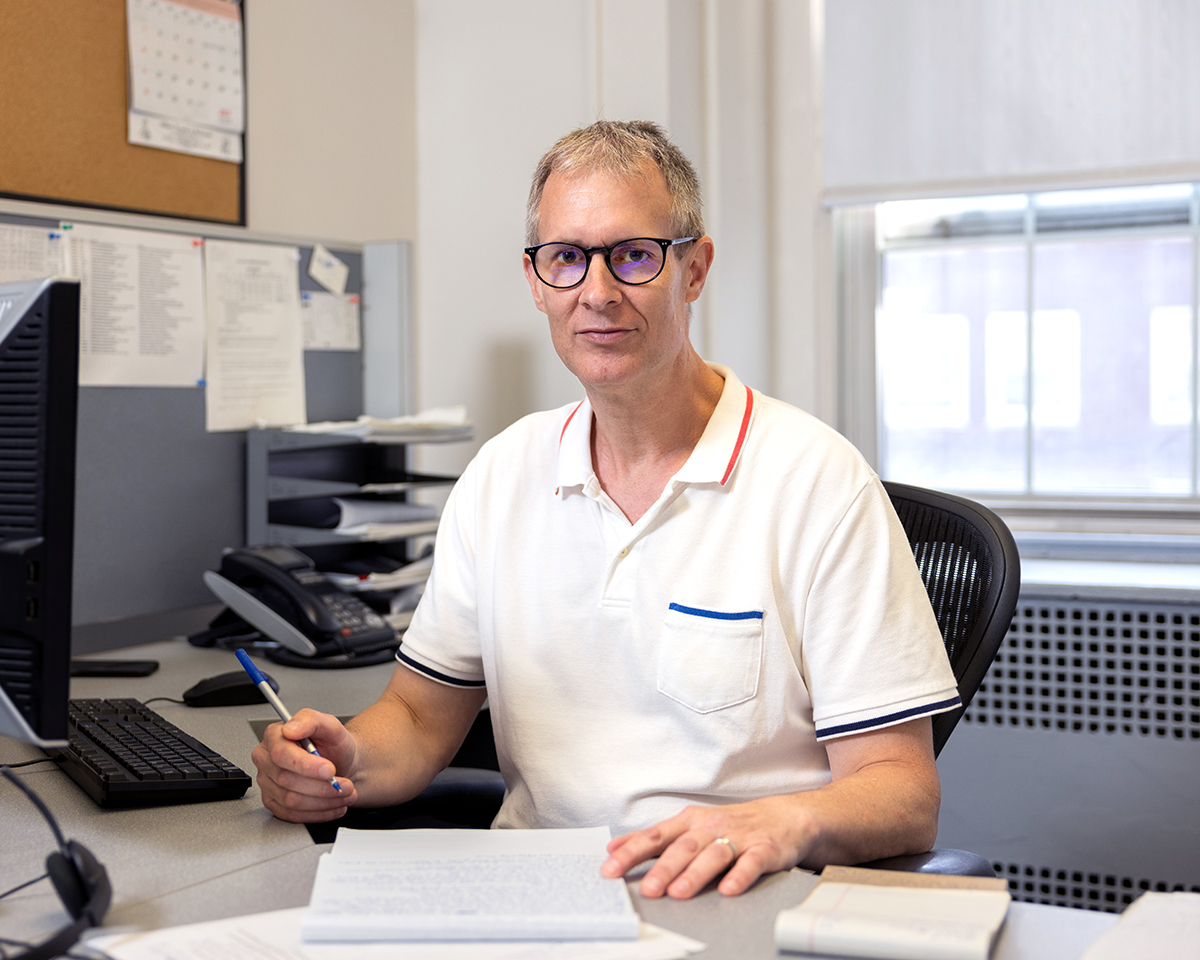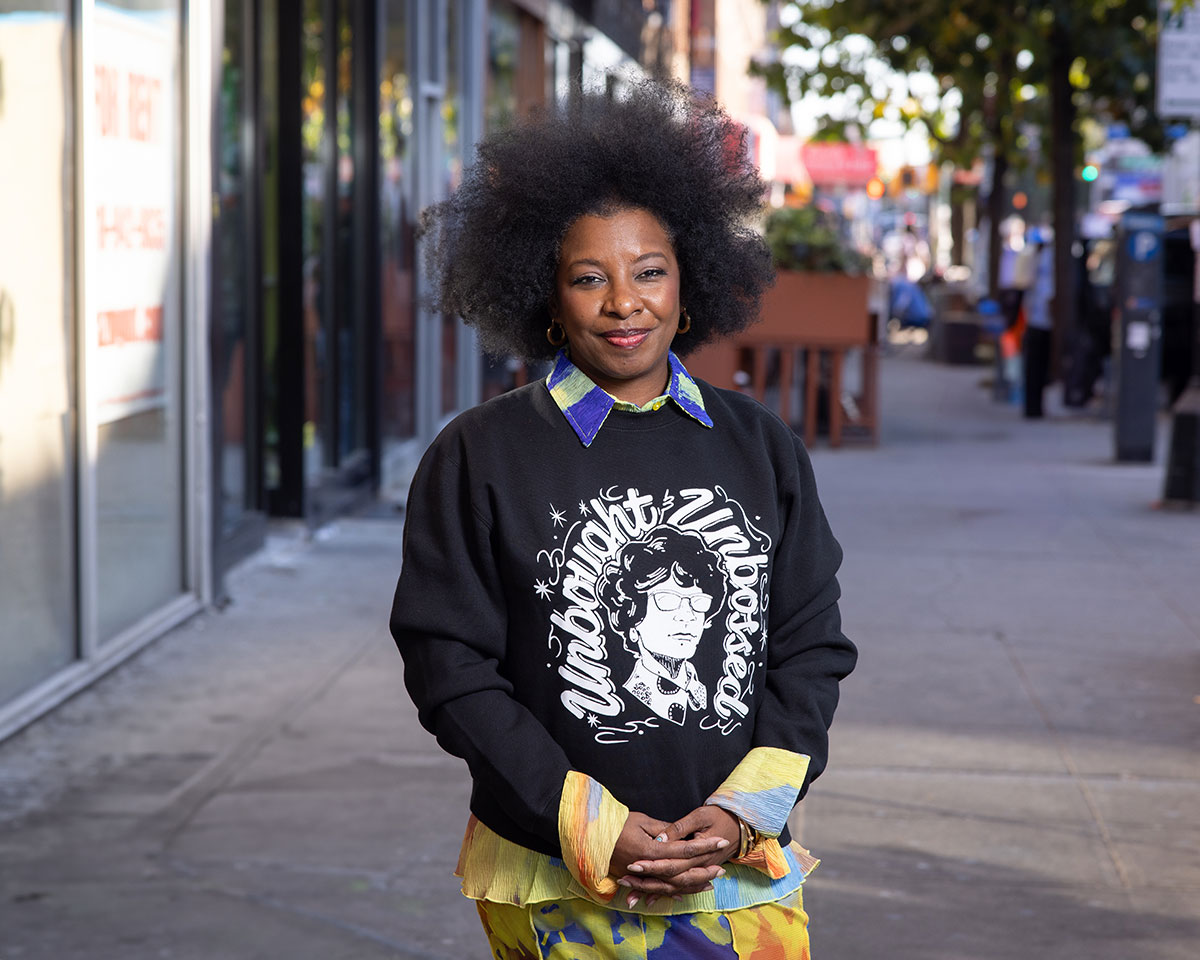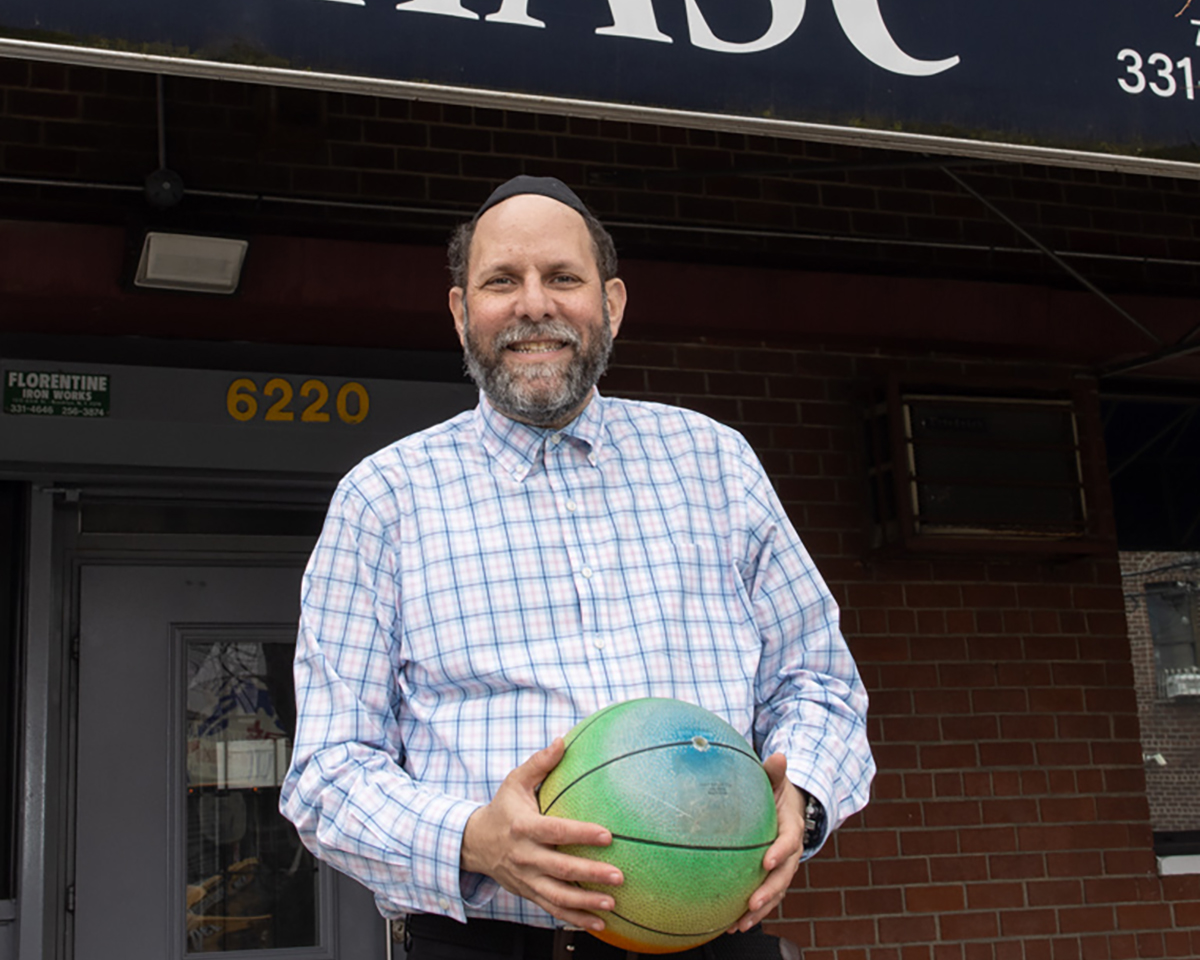Michael Ayers grew up mostly on Long Island on the border with Queens. He was headed for a career as an academic, but when he entered graduate school, he realized that being a professor is a “full-time, 365 days, 24 hours, every waking moment” kind of job, he says. Additionally, data analysis was more instantaneously gratifying than theoretical or historical analysis, and—used correctly—so, too, was its impact.
By the time he finished his Ph.D. in sociology, his dissertation swayed heavy on data analysis. He had gotten married and wound up with a job as a research analyst at Brooklyn College. More than 20 years later, he is now the senior director of Institutional Research and Data Science.
We talked to him about the trends he sees, his deep dive into enrollment numbers, and the good feelings he gets from being on campus.
When you went to SUNY Albany as an undergraduate, you planned to be a professor.
That was my goal. When I got to graduate school, I had a particular interest in the field of social stratification, which is inequality among groups of people in society, and later, in social movements and activism. As much as I enjoyed doing historical analysis in these areas, this sort of research takes an enormous amount of time and is very involved. In academia, you’re always thinking about the next article to publish or present. Even though I had a lot of historical knowledge, I thought it was going to take forever to get through the program. So I turned towards statistical analysis, which I was very much interested in anyway.
I was already working at Brooklyn College for the latter stage. I got married in 2001, and then my wife was living and working here, so I moved here from Albany, and I needed a job. I got this one, as a research analyst. I enjoyed the work. Initially I reported to Alan Gilbert and more recently to April Bedford.
I enjoy the general feeling of Brooklyn College. It’s so much better than going to some box in Manhattan. Here, you get these nice old-fashioned brick buildings and the old trees, and it just feels good.
In your role, you get a real bird’s-eye view of what’s happening.
I really enjoy looking at trends. There’s something that appeals to me about the whole—all of the students collectively. I look at enrollment and the process toward graduation, I evaluate student performance in specific types of classes, and I try to get some sense of what barriers students are facing.
There’s limited time and there are so many demands, so you can only look at so many things. But over the years, you can put some things together and draw conclusions based on trends.
With enrollment down over the years, your data analysis is more important than ever.
Especially during the years right after COVID, there just was so much need to figure out what was going on, what was happening with the students. It’s hard to really get at what the causes are. But we’ve been doing a deep dive looking at what barriers exist.
It’s a tough question. You can look at a whole class of entering students and see how that class is doing in a particular course relative to the previous year’s cohort, or at how well they’re advancing in general—how many courses they are completing compared to the previous cohort. We can make big general statements, but it’s good to look at individual students as well. That’s just not what we do in this office.
Do you ever get a chance to put some flesh on your numbers? To talk to individual students and hear their stories?
I did teach Statistics and Methods as an adjunct for about 10 years. I would hear from students about what they were experiencing. I haven’t done that in a few years, but it was a good way to gain more insight. Students would talk to me about why they were having trouble. That gave me a better view of what was going on.
What do you like to do outside of work?
I’m married, and we have one daughter. My daughter loves soccer, so we go to her games a lot. My wife and I both go running. We do a few races a year. We don’t do the marathons. I’m afraid that I’m going to pull something. But I do a lot of 10Ks. Outside of that, just a lot of ordinary stuff—I like watching new movies and traveling. Those are the ways I blow off steam.



